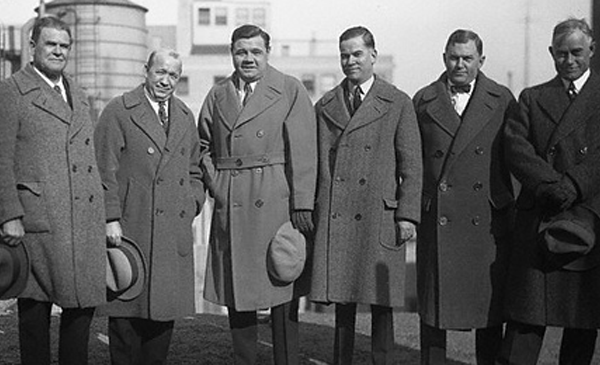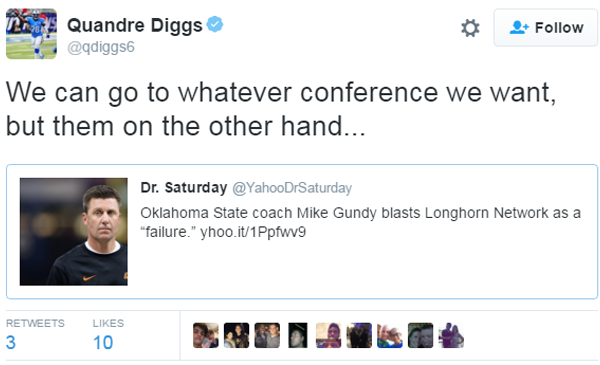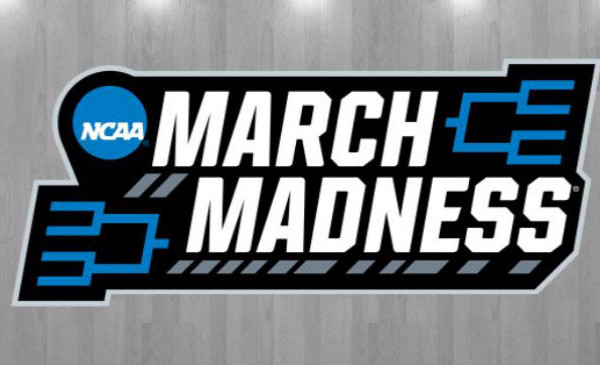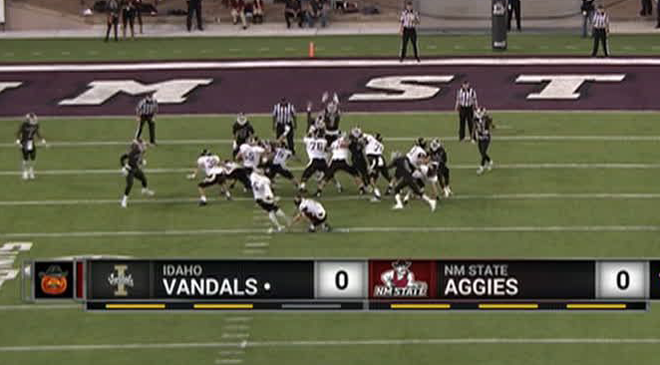The life preserver the Sun Belt Conference threw Idaho and New Mexico State shortly after the Western Athletic Conference ceased football operations never felt like a long-term arrangement.
Reports ahead of a statement from Sun Belt commissioner Karl Benson likely confirm it. Idaho and New Mexico State are out as Sun Belt affiliates, just as Coastal Carolina arrives. That leaves 10 football-playing members, but opens spots for potential FCS invitees like Eastern Kentucky and James Madison.
Eastern Kentucky was a rumored candidate when Coastal Carolina got the call, and officials from Liberty have been upfront about the university’s desire to move to FBS. James Madison is a consistent winner in FCS, with an FBS-ready stadium.
Any of the three make more sense geographically than Idaho or New Mexico State, and the addition of two keeps Sun Belt membership at 12 with the potential for a conference championship game beyond 2016.
That’s assuming the budgetary crisis in Louisiana doesn’t impact Louisiana-Monroe or Louisiana-Lafayette, of course, but that’s a matter for another time.
So what’s next for Idaho and New Mexico State? Both spent a year playing independent schedules between the closure of the WAC and before rejoining the Sun Belt (each had a stint in the conference in the early 2000s).
Independence is a possibility. The two programs likely have a guaranteed game with each other every other, and the flexibility independence affords would benefit BYU, which often has to supplement its late-season schedule with unsightly games like Savannah State and Wagner.
Idaho and New Mexico State have both been willing participants in SEC buy-in games. Given the penchant the SEC has for playing FCS and Sun Belt competition the week before Thanksgiving, the Vandals and Aggies would have little problem filling that weekend.
Add another paycheck game early in the season against any number of Power Five opponents, and that’s 3-4 games per year accounted for. Meanwhile, New Mexico State plays annual rivalry tilts with New Mexico and UTEP.
Completing the rest of the slate is much more of a challenge, however, particularly finding teams to come to Moscow and Las Cruces, respectively. One-off dates with FCS opponents and home-and-home series against Group of Five programs are possible, though challenging.
Independence seems like an unlikely option.
Idaho president told me in January going independent again "not attractive" and Big Sky was viable option. Big Sky commish wants Idaho.
— Dave Southorn (@IDS_Southorn) March 1, 2016
Idaho always felt like a fit for the Big Sky, even if it means a step down to FCS. The Vandals play the rest of their sports in the Big Sky, and dominated the conference from the mid-1980s into the early 1990s.
Everything about Idaho, from geography to stadium size, screams Big Sky. At 16,000 seats, Kibbie Dome is an FCS-venue far more comparable to Northern Arizona’s Walkup Skydome than Boise State’s Albertsons Stadium.
Yet, Idaho athletic director Rob Spear said in August that long-term FBS membership is his goal. Per the Moscow-Pullman Daily News:
“Realistically we hope the long-term future of the University of Idaho is to be in a tier, not the top tier of the Power 5, but certainly in a second tier with like-institutions that have the geographic integrity.”
Last month, the Idaho State Board of Education extended Spear’s contract to 2020.
For New Mexico State, a move to FCS makes sense from a competitive standpoint. The Aggies are on a 55-year bowl drought, and in many recent seasons, have been the worst team in FBS.
The program turned a corner in 2015, winning three Sun Belt Conference games with a young roster, poised to compete for a postseason berth in 2016.
One winning season doesn’t change New Mexico State’s perennial status as FBS cellar-dweller, and Aggie football would certainly be more competitive in the geographically fitting Southland Conference.
However, New Mexico State has potential for an FBS conference — namely Conference USA.
As stated, NMSU plays an annual rivalry game against UTEP, which is a short jaunt from Las Cruces. At over 30,000 seats, Aggie Memorial Stadium is more comparable to a C-USA venue than any FCS stadium. New Mexico State would need to improve on a consistent basis to put fans in those 30,000+ seats, but a step up in league affiliation would help.
Meanwhile, New Mexico State’s consistently successful basketball program gives an immediate boost to the league’s hoops profile. It’s not quite at the level of football, but men’s basketball is the second largest driver of revenue in college sports.
C-USA would need a second member to add along with New Mexico State. UAB reinstating its football program in 2016 will give the league a nice, round number of 14 members. Considering college football has been on a slow, steady move to 16-team super-conferences, C-USA could be the first league to get on board — or the first 16-team super-conference of the current era.
Coincidentally, the WAC moving to 16 teams in the late 1990s indirectly created the mess Idaho and New Mexico State are now in. Much like Louisiana’s budget issues, that’s a topic for another time. That story’s coming to CFB Huddle very soon.










